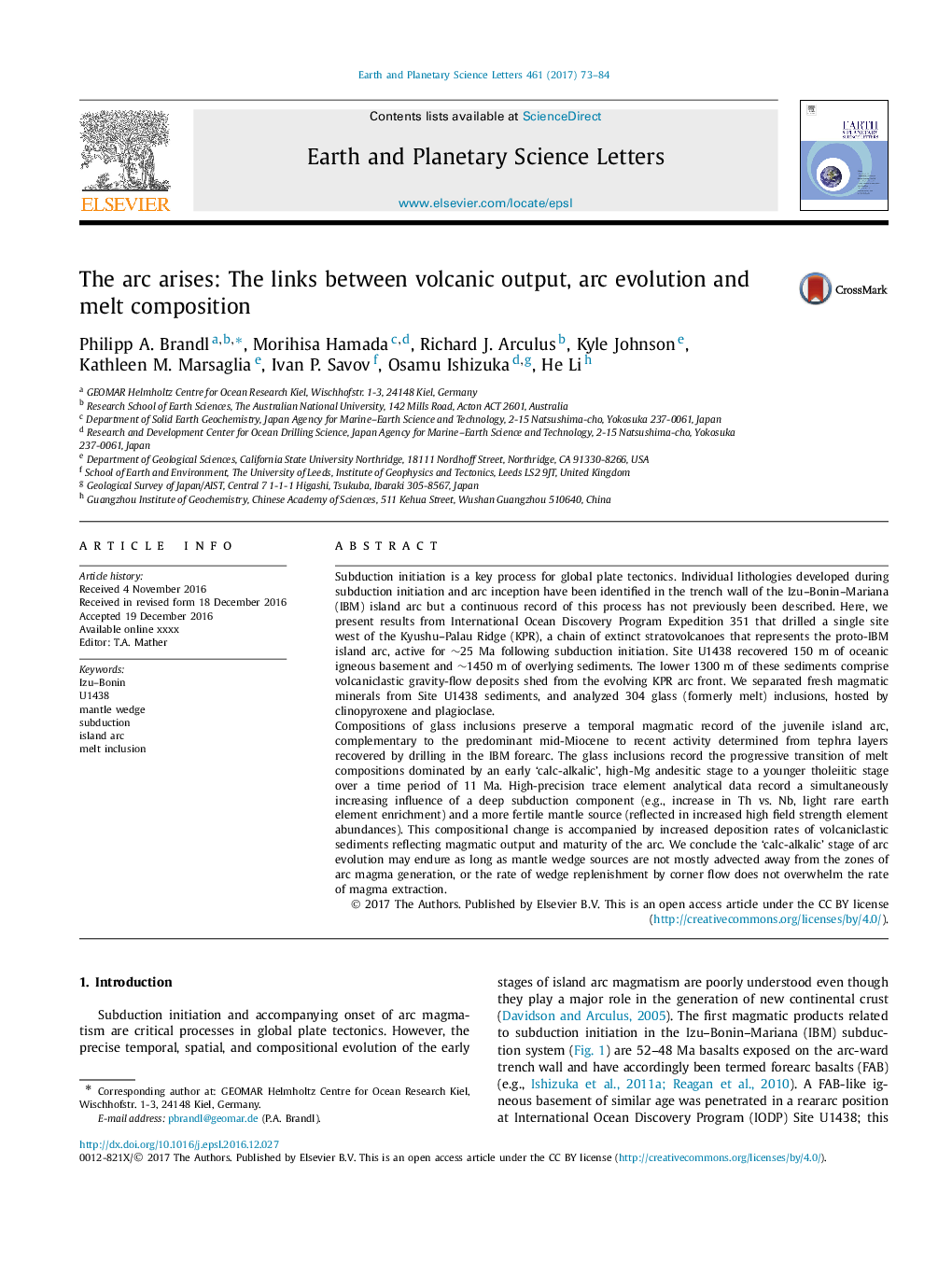| Article ID | Journal | Published Year | Pages | File Type |
|---|---|---|---|---|
| 5779799 | Earth and Planetary Science Letters | 2017 | 12 Pages |
Abstract
Compositions of glass inclusions preserve a temporal magmatic record of the juvenile island arc, complementary to the predominant mid-Miocene to recent activity determined from tephra layers recovered by drilling in the IBM forearc. The glass inclusions record the progressive transition of melt compositions dominated by an early 'calc-alkalic', high-Mg andesitic stage to a younger tholeiitic stage over a time period of 11 Ma. High-precision trace element analytical data record a simultaneously increasing influence of a deep subduction component (e.g., increase in Th vs. Nb, light rare earth element enrichment) and a more fertile mantle source (reflected in increased high field strength element abundances). This compositional change is accompanied by increased deposition rates of volcaniclastic sediments reflecting magmatic output and maturity of the arc. We conclude the 'calc-alkalic' stage of arc evolution may endure as long as mantle wedge sources are not mostly advected away from the zones of arc magma generation, or the rate of wedge replenishment by corner flow does not overwhelm the rate of magma extraction.
Related Topics
Physical Sciences and Engineering
Earth and Planetary Sciences
Earth and Planetary Sciences (General)
Authors
Philipp A. Brandl, Morihisa Hamada, Richard J. Arculus, Kyle Johnson, Kathleen M. Marsaglia, Ivan P. Savov, Osamu Ishizuka, He Li,
